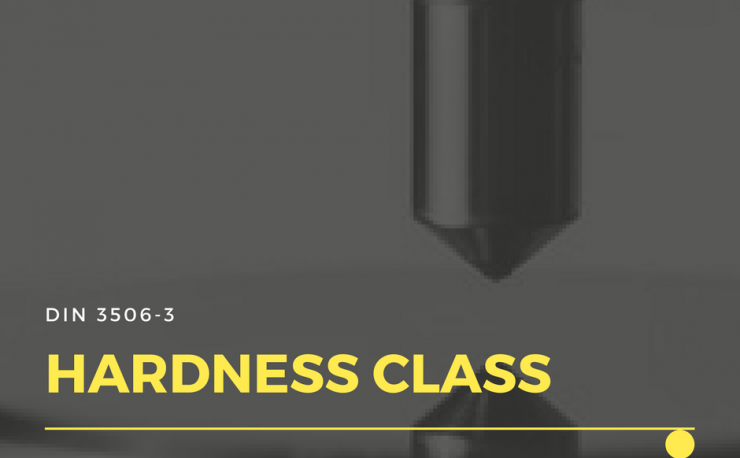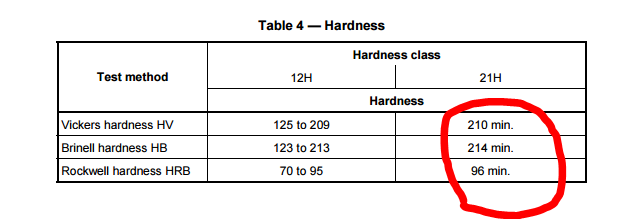
Today we would like to bring to your attention a controversial topic. We are talking about stainless steel hexagon socket set screws.
The preconditions.
We acting on the assumption that hexagon socket set screws don’t have head, quality tests doesn’t provide the resistance measuring.
They are distinguished in the following hardness classes:
- 12 H
- 21 H
Please find below the table 4 contained in paragraph 5.3 of DIN 3506-3 standards.

The minimum result required to declare the 21 H hardness degree is respectively:
- 210 Vickers HV
- 214 Brinell HB
- 96 Rockwell HRB.
What is the problem?
From this arieses the problem. Observing any table that shows the values of hardness conversion, we can see that in 210 Vickers HV doesn’t match the value of 214 Brinell HB. Nor the value of 96 Rockwell HRB.
This means that if (for example) a hexagon socket set screw hardness testing Vickers scale results in 210; for the ISO table that hexagon socket set screw would be considered 21 H. But if we submit the exact same hexagon socket set screw to Brinell scale hardness test, the result would be 12 H.
How is it possible that the same hexagon socket set screw belong to two different classes of hardness?
We try to answer this question.
The only answer that seems plausible is that the tables on hardness conversion values are not really reliable. The different tools used for the three scales make it impossible. In fact, a true comparison of data.
Find our webshop.
Click on the link below to access on our web shop. You can choose the most suitable items to your customers needs.



